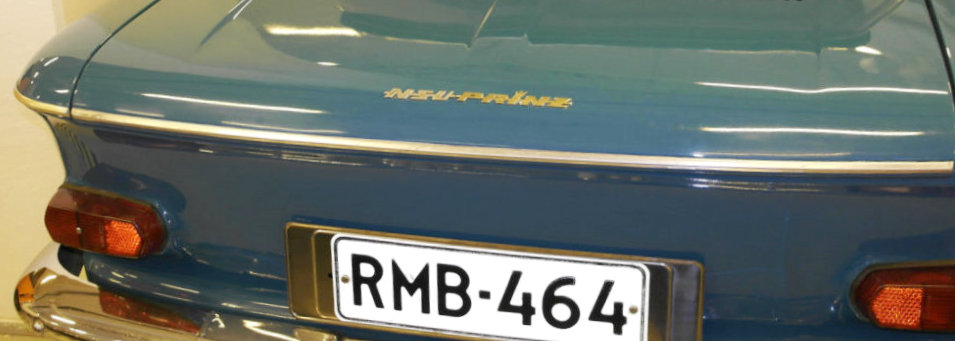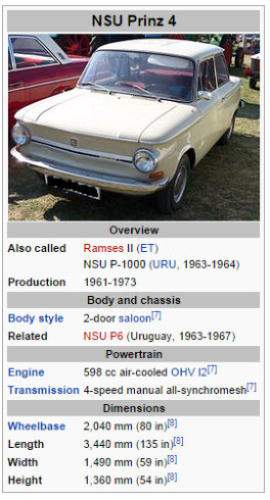












Fahre Prinz und Du bist König

NSU Prinz 4 - 1961
The NSU Prinz is an automobile produced in West
Germany by the NSU Motorenwerke AG. The car was built
from 1957 to 1973, and received a model change in 1961
(the old model was continued until 1962).
One of the revelations of the Frankfurt Motor Show in September 1961, the Prinz 4 replaced
the original Prinz. Its new body closely resembled the then fashionable Chevrolet Corvair, but
was of course much smaller. Like the original Prinz, it was powered by a two-cylinder air-
cooled engine in the rear. The Prinz 4 was much improved and continued to be a well-
engineered car, like its predecessors. The engine carried on the tradition of eccentric rod
driven camshaft inherited from NSU motorcycle engines and interestingly had a dynastart
(combined starter/generator) built into the crankcase. Later four-cylinder engines adopted
the more conventional (pre-engaged) separate starter motor and alternator.
In 1968, Britain's Autocar road tested a Super Prinz. They had tested a Prinz 4 in 1962, and in
commenting on how little the car had changed in the intervening six years quipped some of
their road testers appeared to have gained more weight than the commendably light-weight
Prinz in that period. The test car achieved a top speed of 113 km/h (70 mph) and accelerated
to 97 km/h (60 mph) in 35.7 seconds. The home grown Mini 850 reached 97 km/h (60 mph) in
29.5 seconds in an equivalent recent test and also managed to beat the NSU's top speed,
albeit only by about 3%. At this time, the UK car market was heavily protected by tariffs, and
the Prinz's UK manufacturer's recommended retail price was £597, which was more than the
(possibly below cost) £561 asked for the 850 cc Mini, but certainly not completely out of
touch with it. The testers concluded their report that the car was competitively priced in its
class and performed adequately. They opined, cautiously, it offered 'no more than the rest'
but neither did it 'lack anything important'.

1961
 Engine
598 cc
Top speed
113 km/h
Lenght/width
3,4 m/1,49 m
Engine
598 cc
Top speed
113 km/h
Lenght/width
3,4 m/1,49 m



Photos mainly by Matti Kreivilä. Historical facts and technical details of the vehicles provided by Wikipedia. Movies YouTube.






